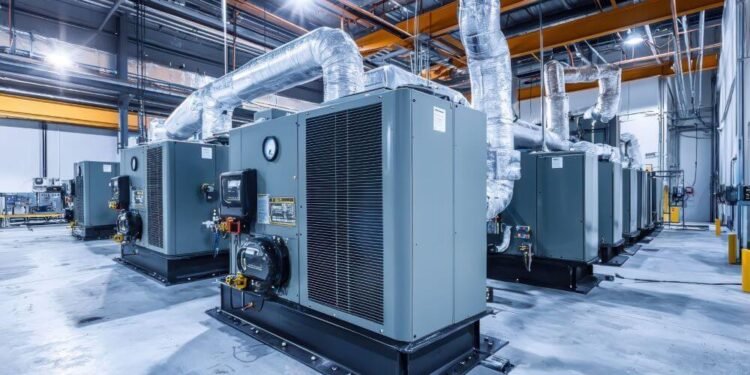What if you could control every detail of your environment with just the push of a button? From keeping temperatures steady to adjusting airflow or light settings, environmental control units (ECU) make it possible. These systems are used in greenhouses, medical labs, cleanrooms, and even luxury homes. They help create stable conditions where precision truly matters.
But choosing the right setup can be tricky. Off-the-shelf models are easy to find and ready to use. On the other hand, custom builds are made to match your specific needs. They sound impressive, but they also tend to cost more.
So, is that added investment worth it? Let’s take a closer look!
Understanding Environmental Control Units
An ECU is a device or system that helps maintain a consistent environment regardless of external changes. These conditions may include temperature, humidity, airflow, lighting, and sometimes even sound. This level of control is vital in places where even a slight variation can cause problems, such as in laboratory environments, medical facilities, telecommunication shelters, or high-tech manufacturing.
Standard ECUs are available in a range of models and sizes. They usually come with preset features that cater to common applications. While these serve many users well, they may not be enough for operations requiring higher precision or flexibility.
In such cases, a custom-built unit may be the only way to achieve the exact specifications needed for optimal performance. For example, a mil-spec environmental control unit is often required in military applications or field-based government projects where durability, strict compliance, and consistent performance in extreme conditions are non-negotiable.
What Custom Builds Bring to the Table
A major advantage of custom builds is the ability to fine-tune the system to your unique environment. Whether you’re working with a complex laboratory setup or climate-sensitive warehouse storage, you can choose the components, sensors, and software controls that work best for you.
Another key advantage is scalability. Custom units can be designed with future expansion in mind. That means it can be built to handle an increase in demand if you plan to grow your operation or include new types of equipment.
When a Standard Unit Might Be Enough
Some environments don’t need the complexity of a custom solution. In many cases, standard ECUs are perfectly capable of handling the job. If your environmental needs are basic or match common industry standards, a ready-made unit can provide the required reliability and performance. These systems are also easier to install and maintain, and replacement parts are often more accessible.
In addition, standard ECUs are usually backed by well-documented support, which makes troubleshooting easier. For operations that value simplicity and speed, especially those just getting started, a standard unit can be the right fit. It allows you to get up and running without the delays and added planning that custom builds require.
The Cost Factor and Value Consideration
The main drawback of a custom ECU is the upfront cost. Because these units are made to order, they often require specialized engineering, longer production times, and more expensive components. This can make them more costly than their off-the-shelf counterparts.
However, it’s essential to look beyond the initial expense. Custom builds often offer long-term savings through better efficiency and reduced maintenance needs. A unit that operates precisely and meets your needs without extra strain will likely last longer and perform better. Over time, this can result in fewer repairs, lower energy use, and improved results in whatever process the ECU supports.
Deciding What’s Right for You
Making the right choice starts with a clear understanding of your environment. Consider the purpose of the space, the level of control needed, and the consequences of environmental changes.
If precision and consistency are critical, and your needs go beyond what a typical unit can offer, a custom build may be the smarter investment. It provides the peace of mind that your system is tailored to your requirements.
At the same time, it helps to weigh the cost against the potential benefits. A custom-built unit may be unnecessary if a portable environmental control unit can meet your needs without sacrificing performance. Consider how long you plan to use the system, whether your needs will grow, and the risk of system failure or fluctuation.
Conclusion
Choosing between a standard and a custom-built environmental control unit depends on your needs. Standard units work well for basic, consistent environments and offer easy setup at a lower cost. While more expensive, custom builds provide precision, flexibility, and long-term value for harsh environments and complex or sensitive spaces. Assess your goals and conditions to make the most practical and cost-effective decision.






